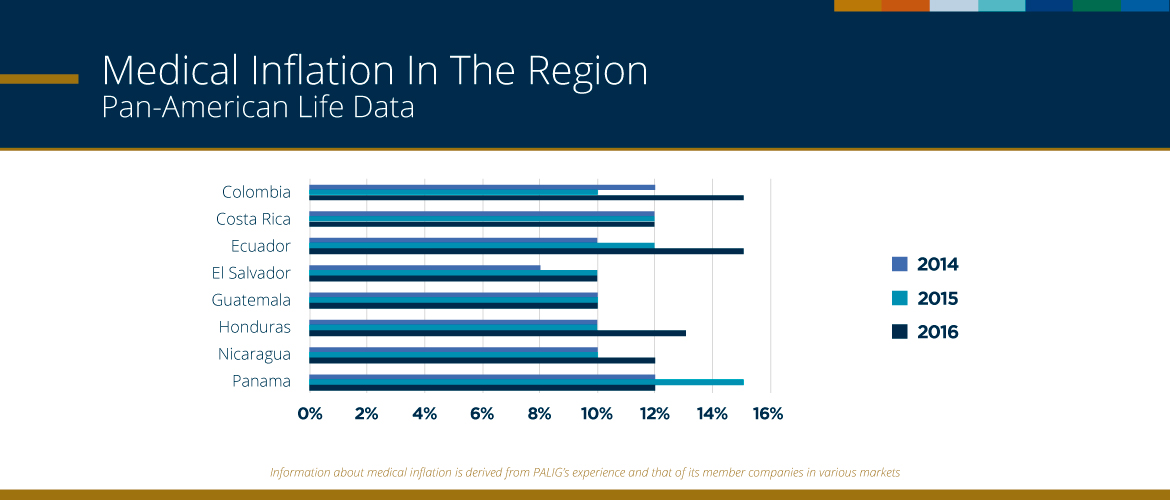20 Jun 2017
Why Is My Health Insurance Getting More Expensive?
There are numerous benefits to having health insurance. It:
- Pays a percentage of your doctor’s visits
- Pays for hospital stays
- Offers discounts on medications
- Provides protection for your family in case of emergency
- Encourages you to get and stay healthy
- Protects your finances by making sure you don’t need to use your savings or take out loans in order to cover medical expenses
If you own insurance, you are already aware of these benefits. But what happens when you budget a certain amount to cover your health insurance premium and then find that the premiums have increased unexpectedly? Your insurance agent will likely tell you that it is the result of a global trend towards high rates of medical inflation.
According to PALIG´s study Personalized Healthcare: A Growing Opportunity – 2016 Trends, medical inflation, which drives increases in the cost of health insurance, is itself being driven by two key factors:
- Increase in the prices of prescription medicines. The launch of first generation medicines and the significant price increase of brand medicines, bio-equivalent and generic medicines have both contributed to increases in spending on medication.
- Increase in the prices of hospital supplies and medical equipment. Significant increases have been observed in the cost of hospital supplies, particularly among supplies that hospitals purchase from third parties, such as surgical trays, prosthetics and medicines. In many cases, the hospital’s price list – that is what they charge for medications and services – is not shared with the insurance companies and therefore, it is difficult to verify the real discount that the patient receives.
According to Medical Trends Around the World 2015, in 21 out of 29 countries being evaluated, the medical inflation was twice that of the general inflation. In 2015, the medical inflation of health insurance companies in Latin America was 12.7 percent versus a general inflation of 8.5 percent[1].

According to José Gabriel Luque, Regional Medical Director for PALIG, medical inflation is exacerbated by the nature of the current health system. Except for very specific examples in the region, “we have a healthcare paradigm whose focus has traditionally been the treatment and healing of diseases. It has been proven that, at a global level, it is less expensive to prevent diseases than to cure them. ”
Despite the fact that medical inflation is an underlying factor in the increased cost of healthcare services, there are certain steps that can be taken to mitigate it:
- Request and understand the explanation of services spreadsheet and what is being charged.
- Compare prices of medicines that are prescribed
- Review, understand, and protect your medical history
Health insurance provides security and it is maximized even more when people are better informed.
[1] Cabrera Vásconez, David. “Medical Inflation and its Relationship with Health Drivers.” Redacción médica. June 23, 2016. http://www.redaccionmedica.ec/opinion/la-inflaci-n-m-dica-y-la-relaci-n-con-los-impulsores-de-costo-en-salud-1953


